Abstract
Scrub typhus infection is now known to occur in geographical and ecological areas where its presence was hitherto unsuspected—north and west of the Indus River and in south-eastern Siberia; in semi-desert, montane desert, and alpine terrain high in the Himalayas, as well as in primary jungle. Additional data are presented to support the hypothesis that “ecological islands”, containing basically similar faunas of rodents and ectoparasites, exist on scattered mountains in the Pakistan Himalayas, despite the intervening “barriers” of desert, broad rivers and massive peaks. Since scrub typhus has been demonstrated in some of these isolated areas, it is felt that the infection may exist, unrecognized, in neighbouring countries as well.
A number of larval trombiculid mites, largely species of the subgenus Leptotrombidium, are believed to be vectors, in addition to the well-known L. (L.) deliense and L. (L.) akamushi. The host-range of natural infection in ground-dwelling small mammals, especially rodents, is very broad in endemic areas. An important factor of time, and not only of space, may be involved in an endemic locus, the disease undergoing a sequential evolution involving different chiggers and rodents over a period of years. It is pointed out that new irrigation schemes, road construction, and agricultural projects may introduce scrub typhus into an area or greatly increase its endemicity if the infection is already present.
Full text
PDF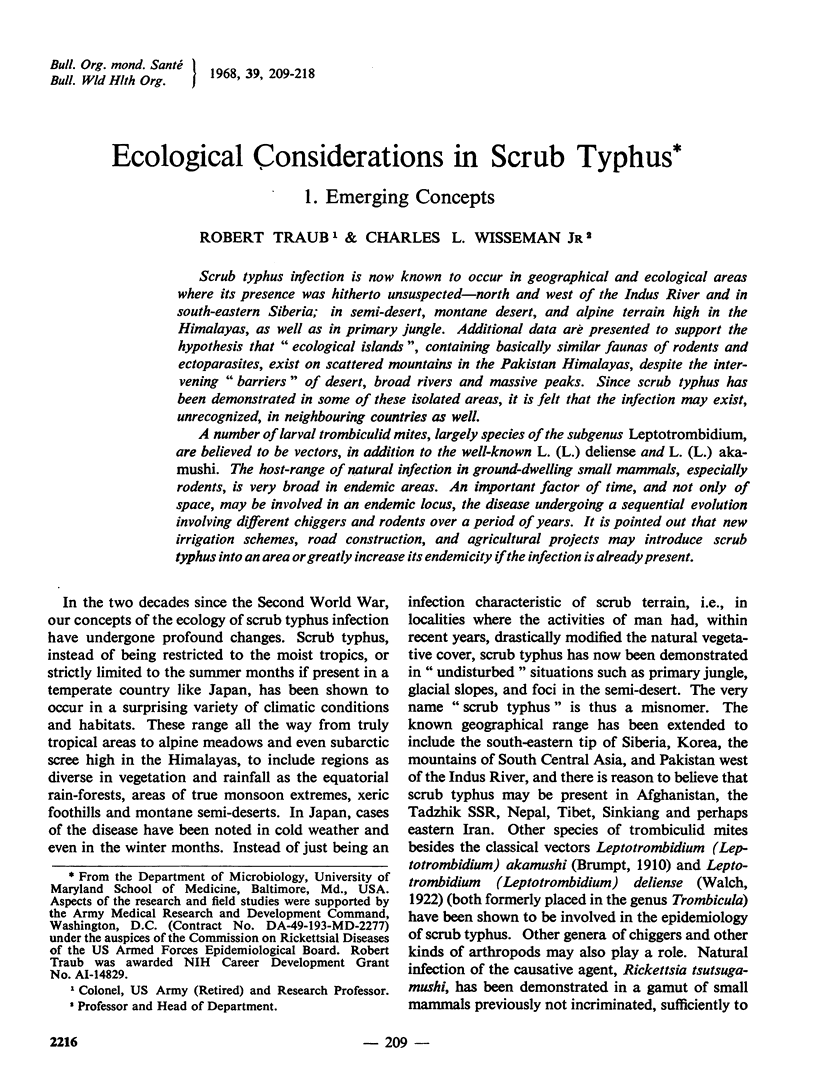
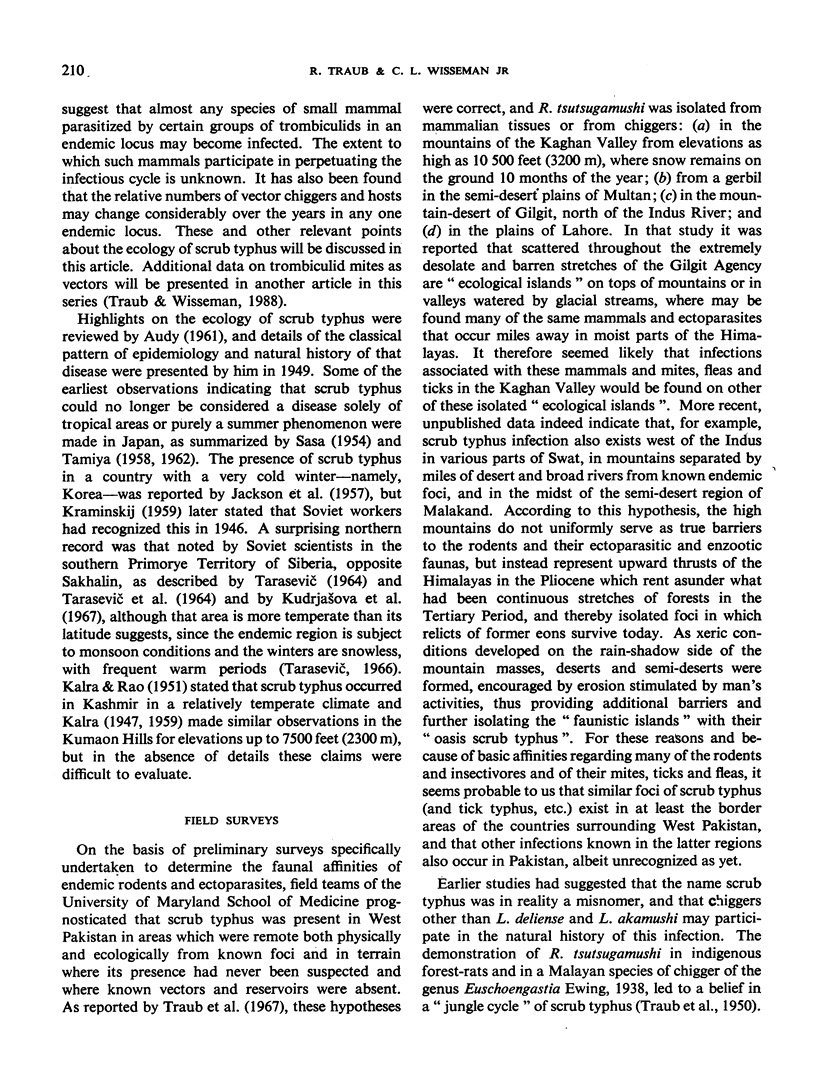
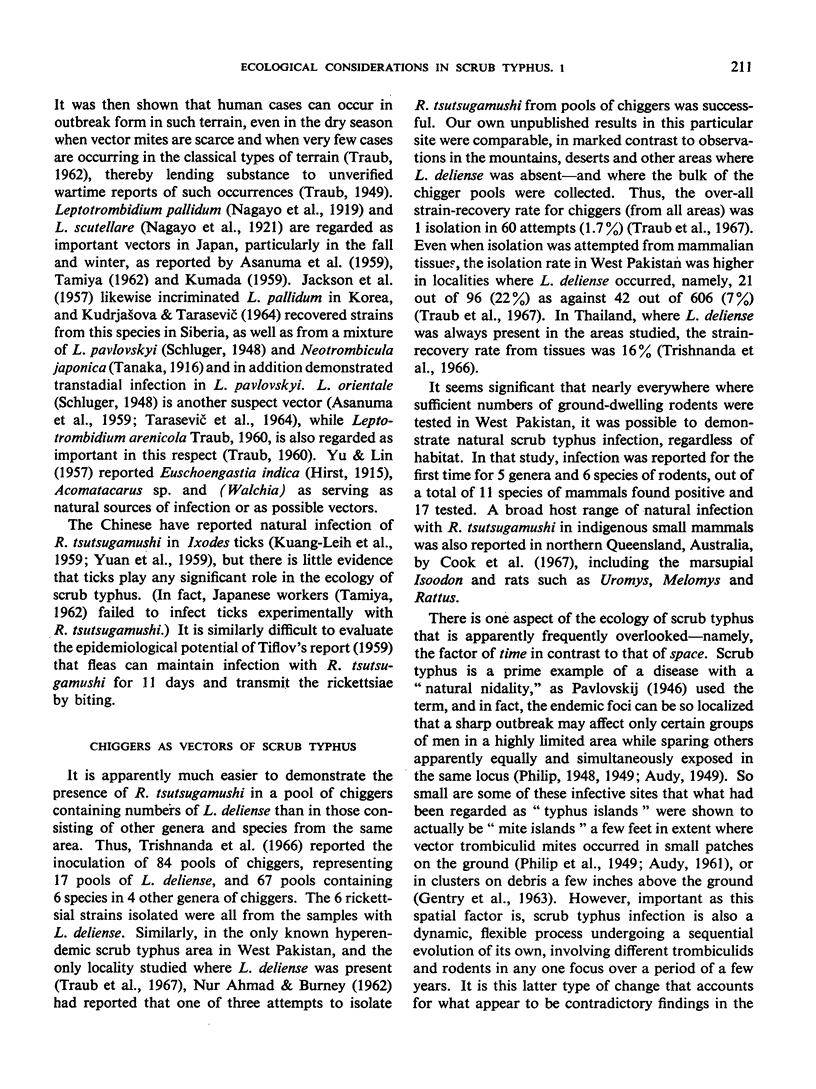
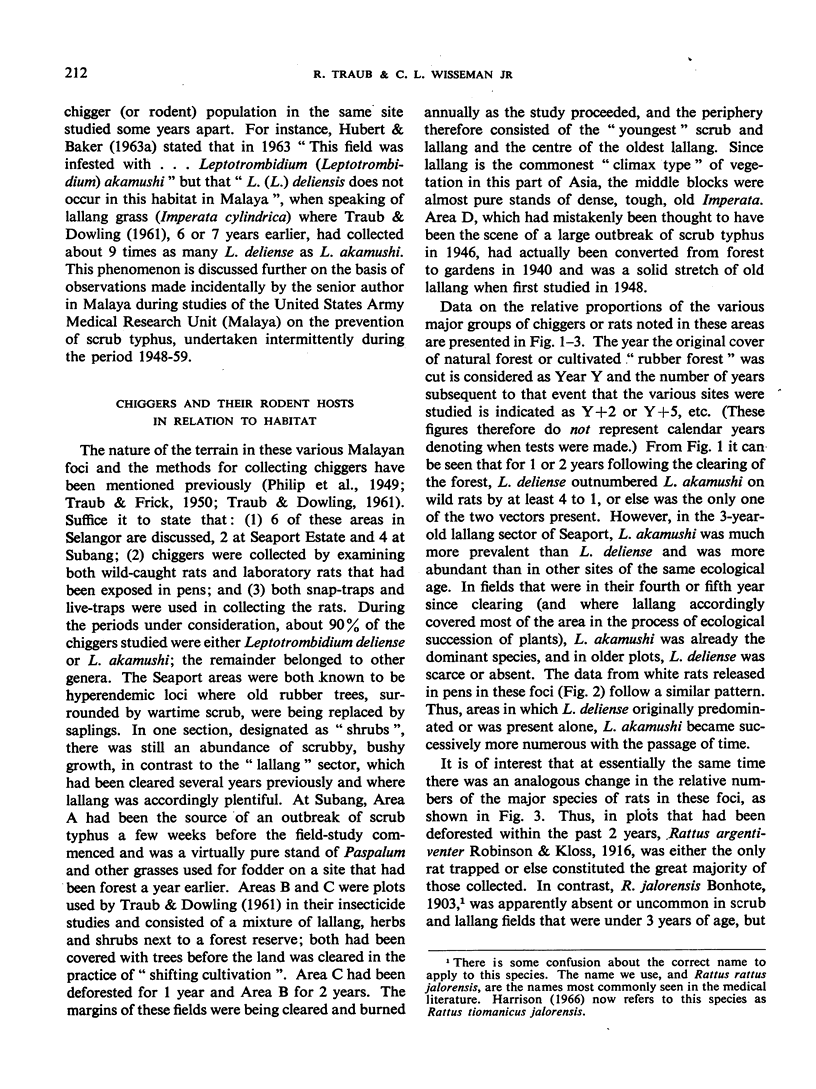
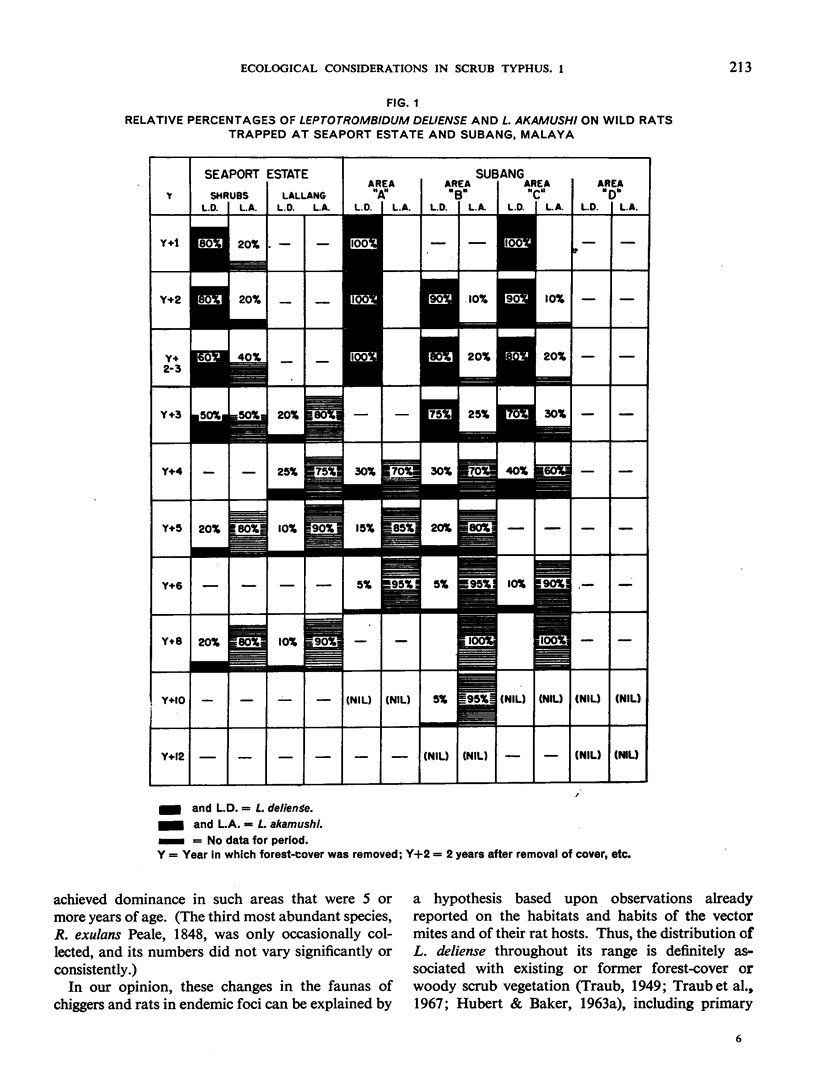
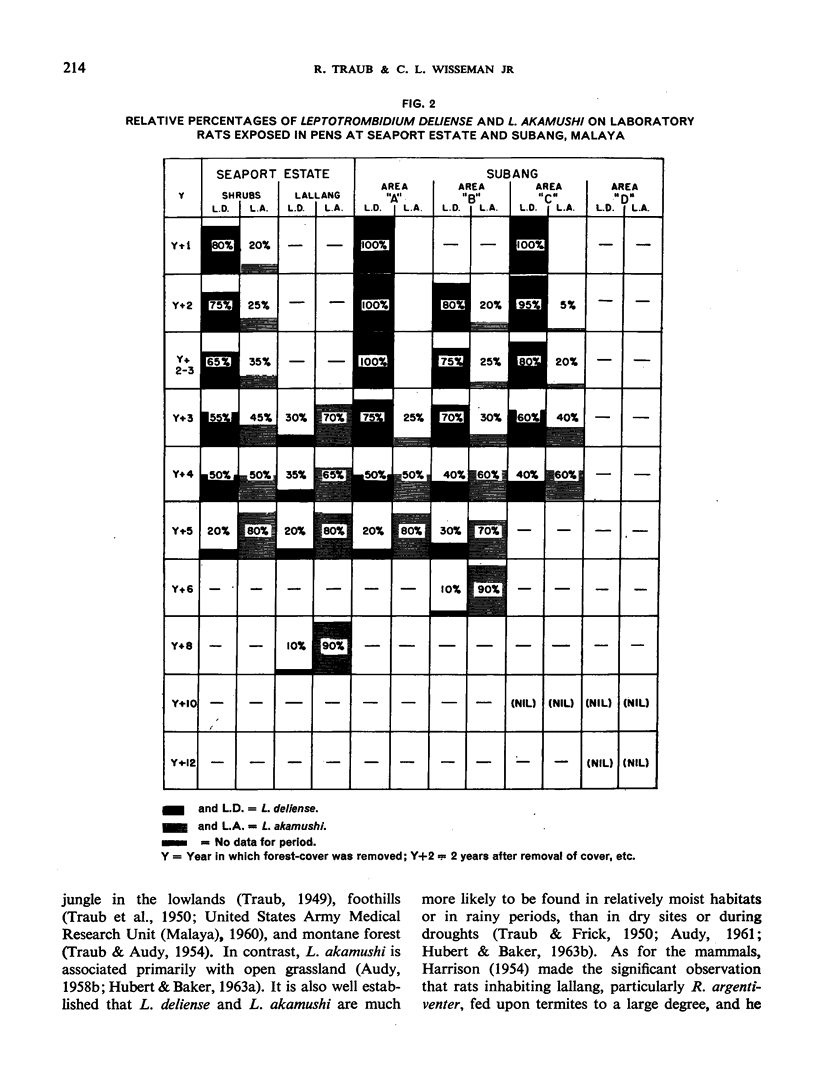
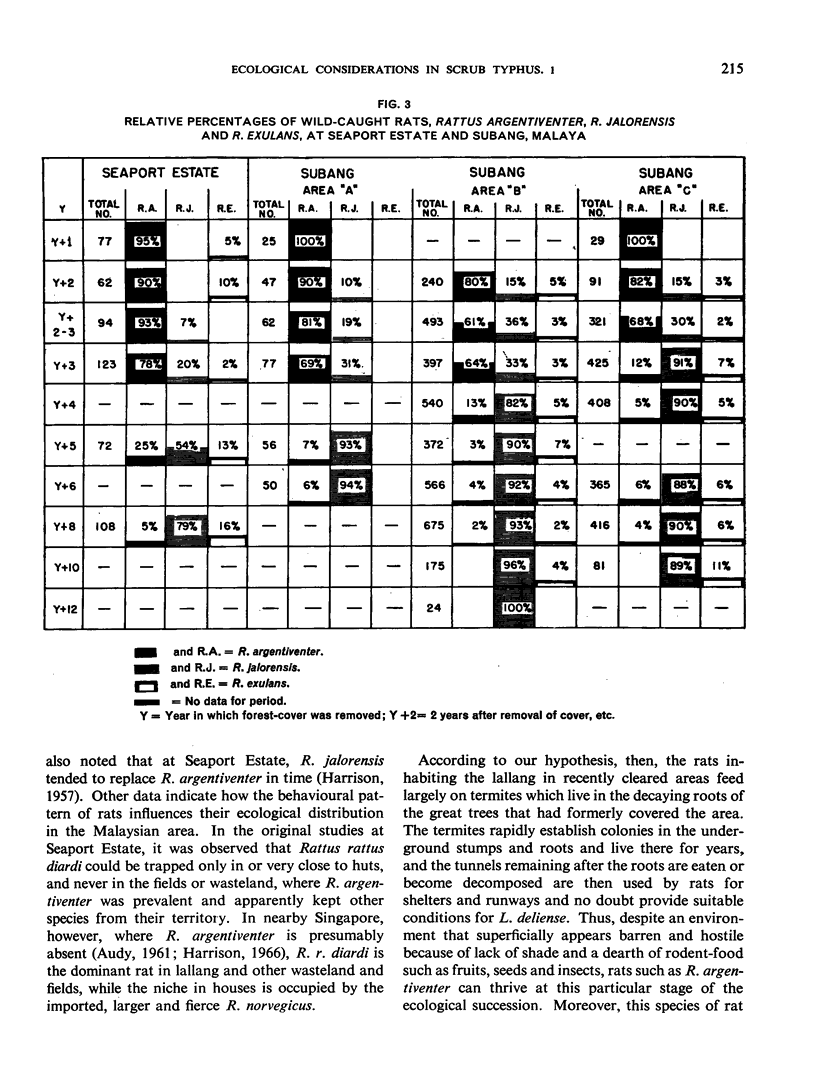
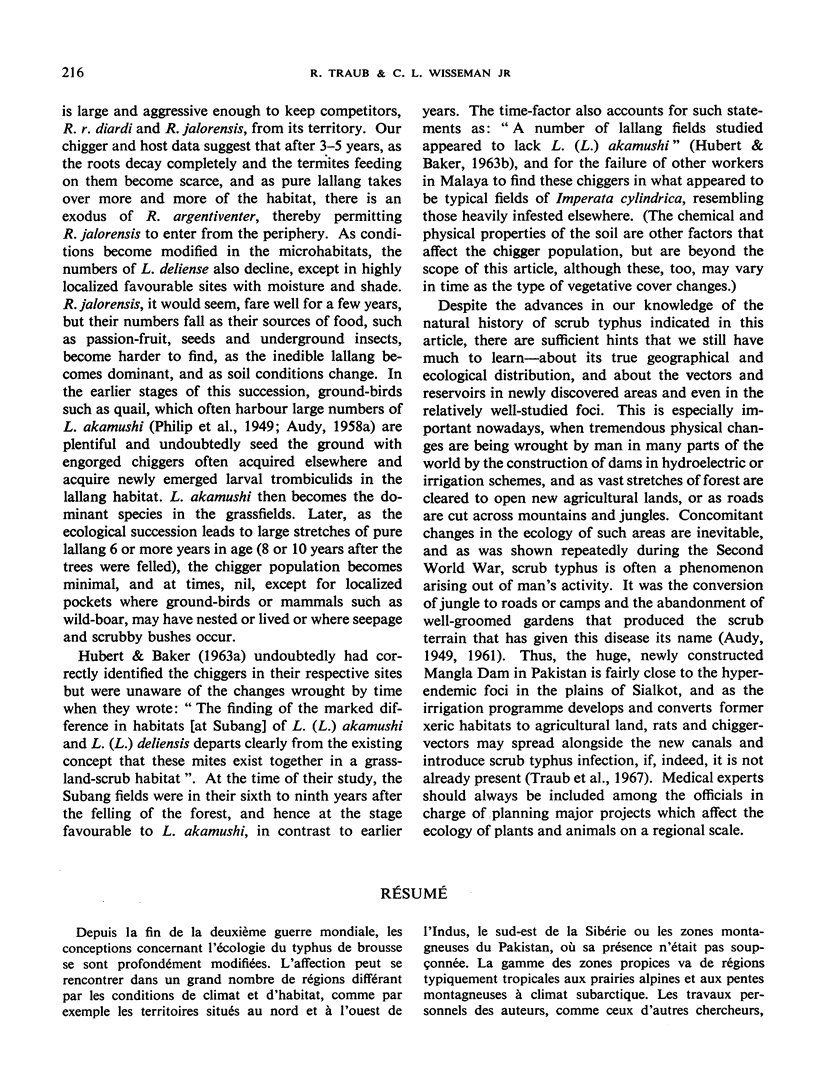
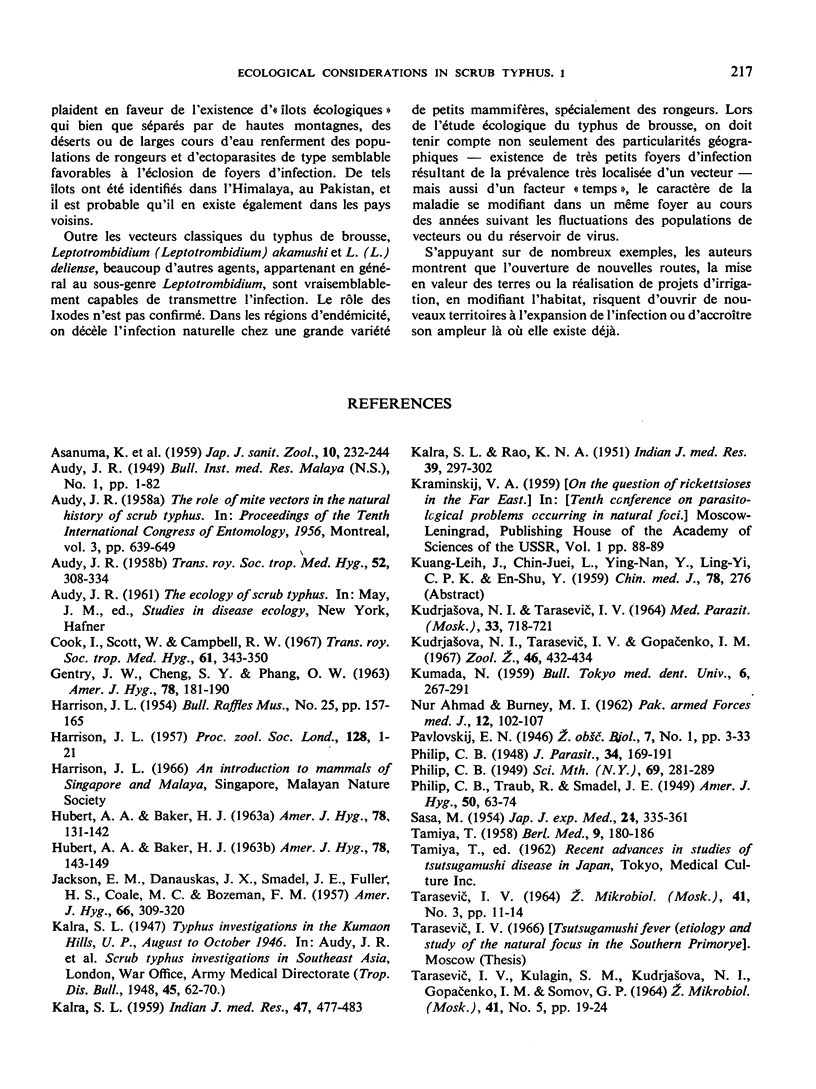
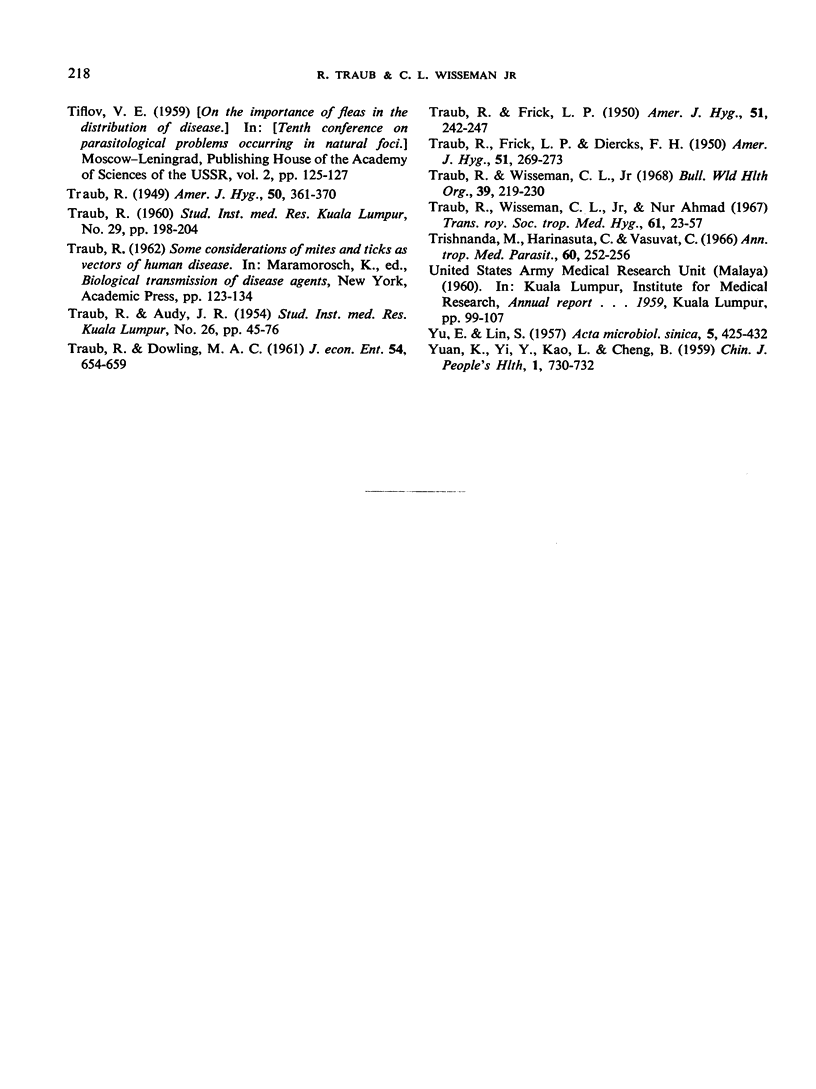
Selected References
These references are in PubMed. This may not be the complete list of references from this article.
- AUDY J. R. The localization of disease with special reference to the zoonoses. Trans R Soc Trop Med Hyg. 1958 Jul;52(4):308–334. doi: 10.1016/0035-9203(58)90045-2. [DOI] [PubMed] [Google Scholar]
- GENTRY J. W., YUEH C. S., WAH P. O. PRELIMINARY OBSERVATIONS ON LEPTOTROMBIDIUM (LEPTOTROMBIDIUM) AKAMUSHI AND LEPTOTROMBIDIUM (LEPTOTROMBIDIUM) DELIENSIS IN THEIR NATURAL HABITAT IN MALAYA: (ACARINA: TROMBICULIDAE). Am J Hyg. 1963 Sep;78:181–190. doi: 10.1093/oxfordjournals.aje.a120337. [DOI] [PubMed] [Google Scholar]
- HUBERT A. A., BAKER H. J. STUDIES ON THE HABITATS AND POPLUATION OF LEPTOTROMBIDIUM (LEPTOTROMBIDIUM) AKAMUSHI AND L. (L.) DELIENSIS IN MALAYA (ACARINA: TROMBICULIDAE). Am J Hyg. 1963 Sep;78:131–142. doi: 10.1093/oxfordjournals.aje.a120332. [DOI] [PubMed] [Google Scholar]
- HUBERT A. A., BAKER H. J. THE PERSISTENCE OF FOCI OF LEPTOTROMBIDIUM (LEPTOTROMBIDIUM) AKAMUSHI ALONG A TRANSECT IN MALAYA (ACARINA: TROMBICULIDAE). Am J Hyg. 1963 Sep;78:143–149. doi: 10.1093/oxfordjournals.aje.a120333. [DOI] [PubMed] [Google Scholar]
- JACKSON E. B., DANAUSKAS J. X., SMADEL J. E., FULLER H. S., COALE M. C., BOZEMAN F. M. Occurrence of Rickettsia tsutsugamushi in Korean rodents and chiggers. Am J Hyg. 1957 Nov;66(3):309–320. doi: 10.1093/oxfordjournals.aje.a119904. [DOI] [PubMed] [Google Scholar]
- KALRA S. L. Progress in the knowledge of rickettsial diseases in India. Indian J Med Res. 1959 Sep;47:477–483. [PubMed] [Google Scholar]
- KALRA S. L., RAO K. N. A. Typhus fevers in Kashmir State. Part II. Murine typhus. Indian J Med Res. 1951 Jul;39(3):297–302. [PubMed] [Google Scholar]
- KUDRIASHOVA N. I., TARASEVICH I. V. KLESHCHI-KRASNOTELKI V PRIRODNOM OCHAGE LIKHORADKI TSUTSUGAMUSI V IUZHNOM PRIMOR'E. Med Parazitol (Mosk) 1964 Nov-Dec;33:718–721. [PubMed] [Google Scholar]
- PHILIP C. B., TRAUB R., SMADEL J. E. Chloramphenicol in the chemoprophylaxis of scrub typhus; epidemiological observations on hyperendemic areas of scrub typhus in Malaya. Am J Hyg. 1949 Jul;50(1):63–74. doi: 10.1093/oxfordjournals.aje.a119346. [DOI] [PubMed] [Google Scholar]
- SASA M. Comparative epidemiology of Tsutsugamushi disease in Japan. Jpn J Exp Med. 1954 Dec;24(6):335–361. [PubMed] [Google Scholar]
- TARASEVICH I. V., KULAGIN S. M., KUDRIASHOVA N. I., GOPACHENKO I. M., SOMOV G. P. PRIPODNY I OCHAG LIKHORADKI TSUTSUGAMUSI. Zh Mikrobiol Epidemiol Immunobiol. 1964 May;41:19–24. [PubMed] [Google Scholar]
- TRABU R. Observations on tsutsugamushi disease in Assam and Burma; the mite, Trombicula deliensis Walch, and its relation to scrub typhus in Assam. Am J Hyg. 1949 Nov;50(3):361–370. [PubMed] [Google Scholar]
- TRAUB R., FRICK L. P., DIERCKS F. H. Observations on the occurrence of rickettsia tsutsugamushi in rats and mites in the malayan jungle. Am J Hyg. 1950 May;51(3):269–273. doi: 10.1093/oxfordjournals.aje.a119392. [DOI] [PubMed] [Google Scholar]
- Traub R., Wisseman C. L., Jr, Ahmad N. The occurrence of scrub typhus infection in unusual habitats in West Pakistan. Trans R Soc Trop Med Hyg. 1967;61(1):23–57. doi: 10.1016/0035-9203(67)90052-1. [DOI] [PubMed] [Google Scholar]
- Traub R., Wisseman C. L., Jr Ecological considerations in scrub typhus. 2. Vector species. Bull World Health Organ. 1968;39(2):219–230. [PMC free article] [PubMed] [Google Scholar]
- Trishnananda M., Harinasuta C., Vasuvat C. Studies on the vector of Rickettsia tsutsugamushi infection in Thailand. Ann Trop Med Parasitol. 1966 Jun;60(2):252–256. doi: 10.1080/00034983.1966.11686413. [DOI] [PubMed] [Google Scholar]


